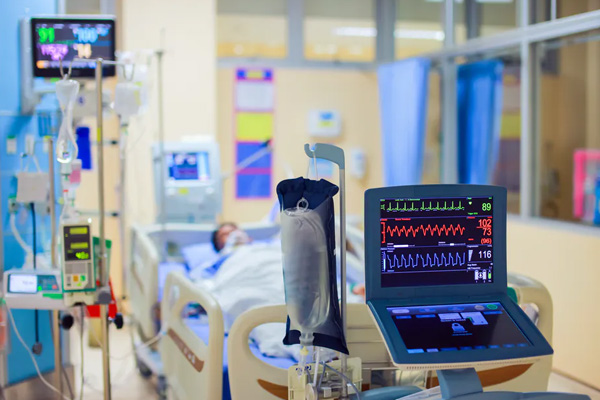
Intensive care represents the highest level of patient care and treatment designated for critically ill patients with potentially recoverable life-threatening conditions. The Centers for Medicare & Medicaid Services defines critical illness or injury as “acutely impairing one or more vital organ systems such that there is a high probability of imminent or life-threatening deterioration in the patient’s condition”. Intensive care (critical care) is a multidisciplinary and interprofessional speciality specifically designed for the management of patients at risk of developing or with established, life-threatening organ failure. The capacity to temporarily support and if necessary, replace the function of many failing organ systems, particularly the lungs, cardiovascular system and kidneys, is what underscores intensive care medicine.
The Intensive Care Unit (ICU) is a separate, self-contained area within a medical facility, equipped with high-tech specialised facilities designed for close monitoring, rapid intervention and often extended treatment of patients with acute organ dysfunction.
It is committed to the management and continuous monitoring of patients with life-threatening conditions. The aim of intensive care is to maintain vital functions in order to prevent further physiological deterioration, reduce mortality and prevent morbidity in critically ill patients. Provision of intensive care is within the continuum of primary, secondary and tertiary care, with the majority of these services delivered in the secondary-care setting.
Intensive care units can be organised based on the pathologies/conditions treated (e.g. neurological, trauma, burns, medical or surgical ICUs) or by the age group of the patient admitted (adult or paediatric). Specialized intensive care units include medical, surgical, pediatric and neonatal intensive care units.
The medical intensive care unit is dedicated to the care of adult patients with medical conditions requiring frequent observation, specialized monitoring and medical treatment. These include illnesses such as diabetic ketoacidosis, gastrointestinal bleeding, drug overdose, respiratory failure, sepsis, stroke and cancer.
The surgical intensive care unit is dedicated to the management of postoperative patients, including postoperative patients who have undergone major abdominal surgeries, craniotomy patients, thoracotomy patients, unstable multiple trauma patients and any surgical patient who requires continuous monitoring or life support.
Critically ill children are managed in the paediatric intensive care unit. Children who had just undergone surgery and are at risk of deterioration are also managed in the pediatric intensive care unit.
The neonatal intensive care unit is responsible for the management of premature, high-risk and critically ill infants. Neonates with congenital disorders and birth complications are also managed in the neonatal intensive care unit.
Many other types of ICUs exist, for example, coronary units, burns units, trauma ICUs, mixed ICUs and out-of-hospital ICUs (mobile ICUs).
Equipment in the ICU is mostly aimed at life-support and the support of different organs in the body (for example the lungs, the heart or the kidneys). These include, but is not limited to: